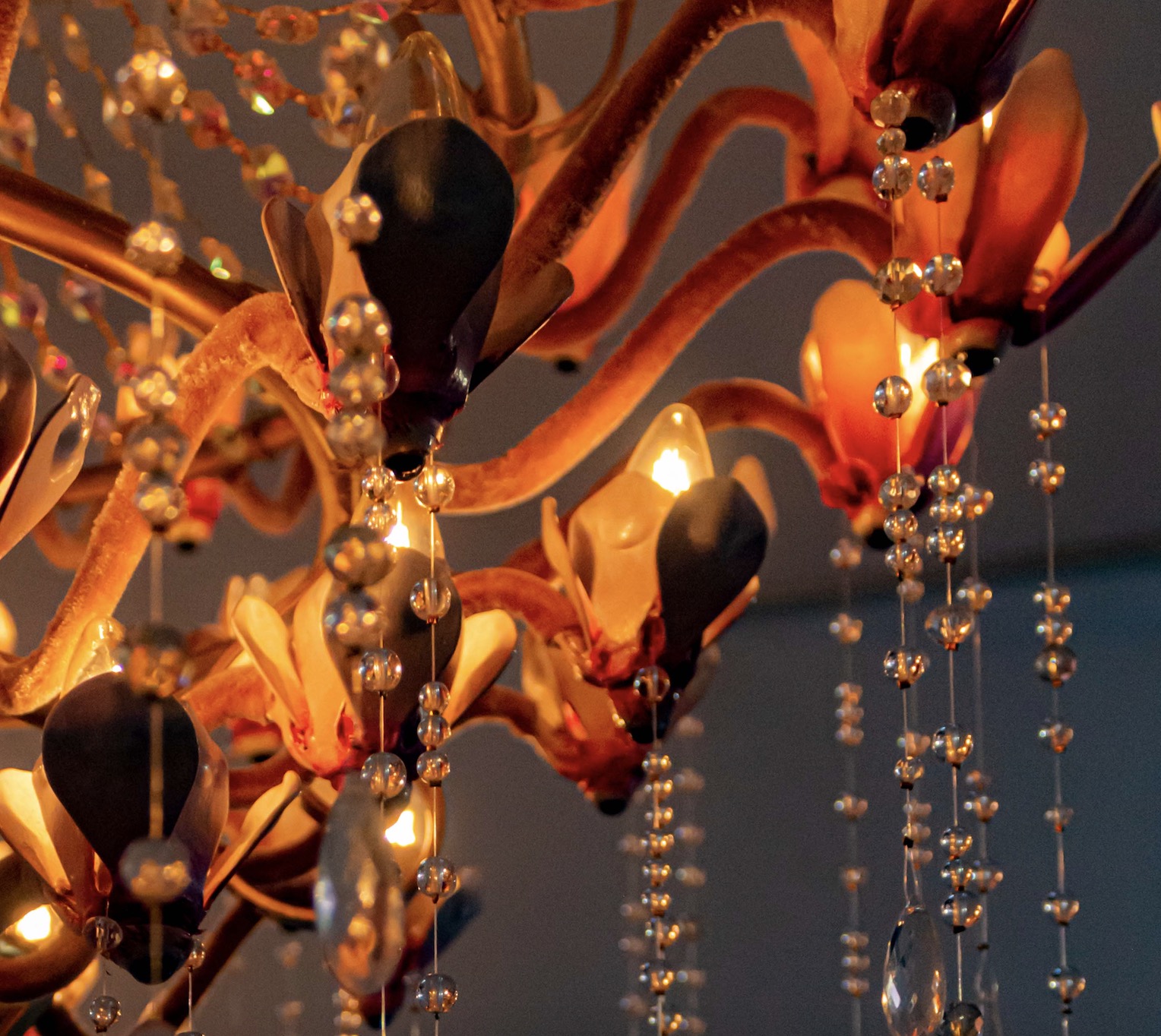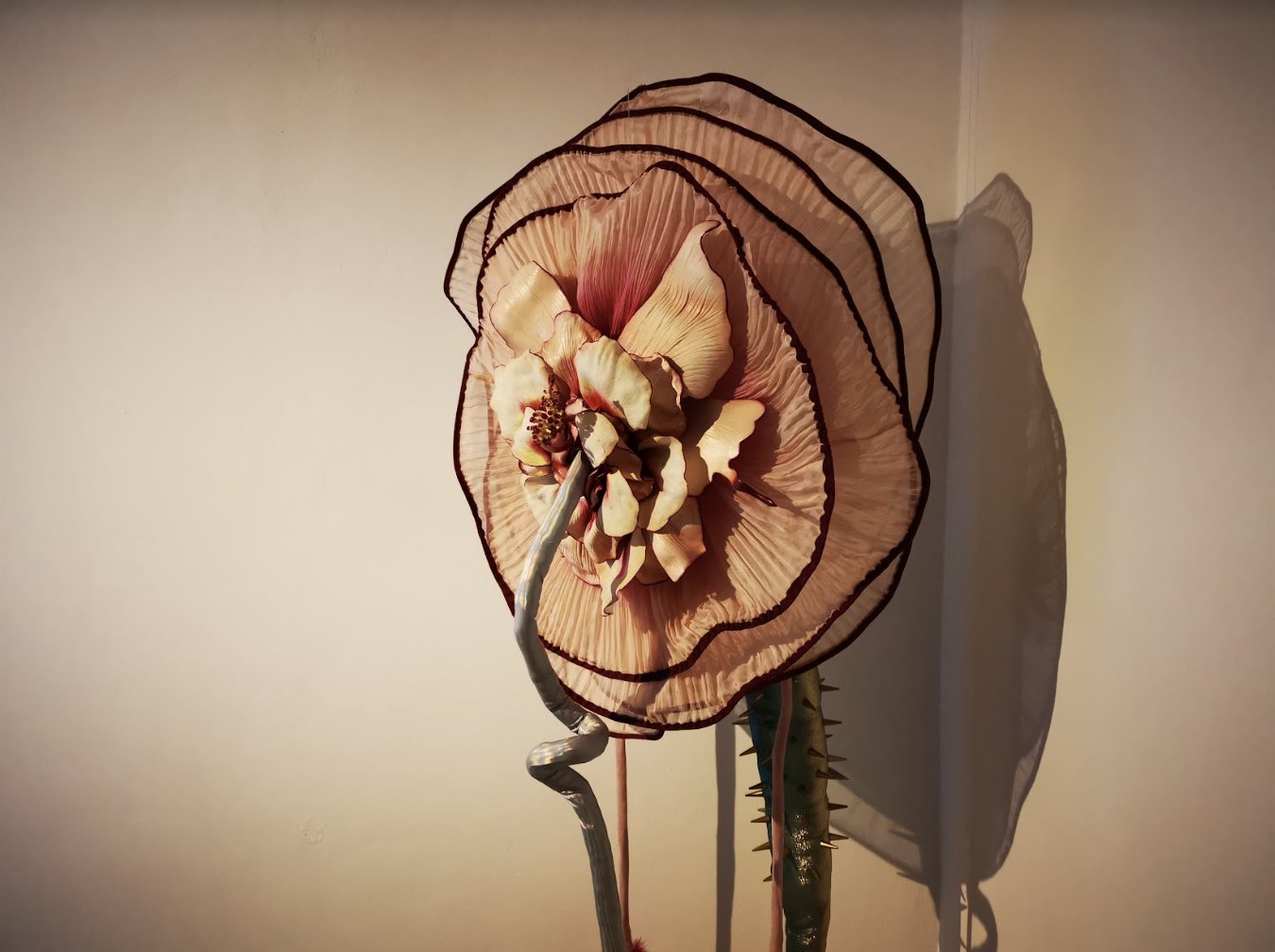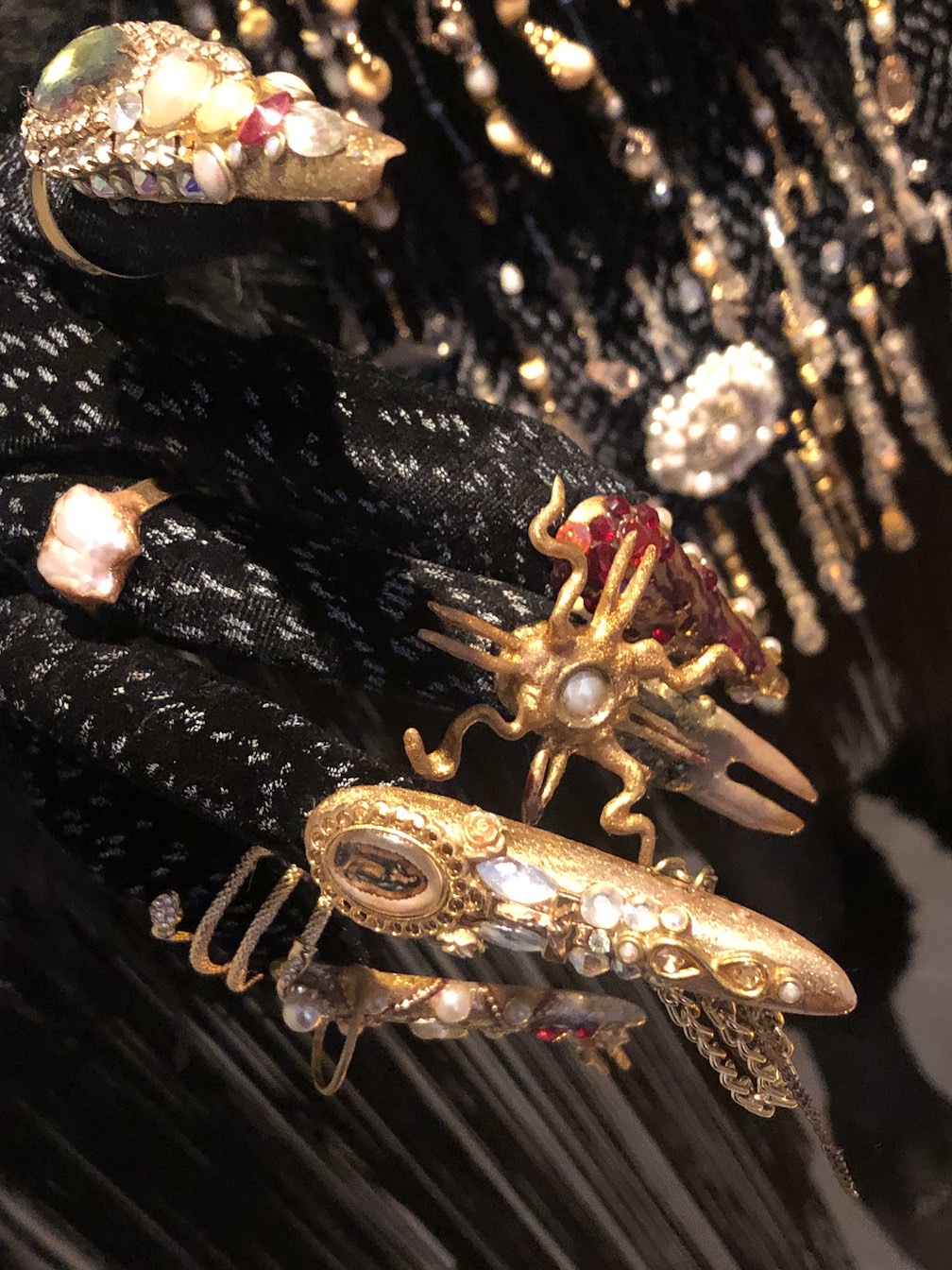
Essay
Siempreviva: A Feel before a Concept. Alan Hernández opens Resquicio at Casa del Lago
by Sandra Sánchez
Reading time
4 min
There are certain texts that ask you to close your eyes before writing. Blocking one’s view in order to reminisce. Feeling once again the stones, the embroidery, the light, the feathers, the joints, and the weight of the bodies: their interaction.
Siempreviva.
A feel before a concept.
Five bodies floating in space,
heavy.
Presences that resist and surrender,
gravity suspended by transparent threads.
Almost everyone:
about to brush against the ground.
If matter yields,
it is in order to spill out.
(A seal taking a nap on a large stone
—how do snakes sleep?)
Levitating, wandering, weighing.
A mirror does not refer to something identical or to a metaphor. The intakes of this encounter belong to a different register: frictions of reality in motion rather than projections of representative coordinates; intensification of details, of reflections that are not exhausted in a reference point, instead of schematizations; iridescent clarities coming from the real itself rather than elucidations via clever lighting.*1

Kneeling down, not in order to pray but rather in order to keep one’s eyes very close to the ground:
staring into the void between the ground and the body. Raising one’s face,
feeling with one’s eyes the beads falling like drops, the strange
softness of the pom-poms, the spikes emanating from soft fur
and redness: ineluctable. Surface and sprouting at the same time, swings of flows that connect
the inside with the outside. Transits everywhere. Hooves of goat feet.
(The enormous pleasure of reading what is written
on a person’s face while looking.
Neither they nor we seek to know anything)
Turning off the light. Being surprised that the light comes from within.
Field of fireflies. Membrane-piercing glare.
Organs that look back at you, breaking any dichotomy.
More than an exhibition, what we are facing is an enclosure: a place to invoke the divine—not in transcendent but rather immanent terms: concrete materialities linked to survival, hands that embroider and thread transtemporally, identifiable forms that do not presuppose the relationship with the animal, the supernatural, and the earth, but rather perform it: the encounter is the unpredictable itself.*2

Wait a bit, I take it back. This isn’t about the divine, but rather the cosmic: an order (among orders) of which we are a part and of which we know very little. Assemblage constituted by its chaos, without the possibility of synthesis. Sensation similar to looking at the clouds on any given day and being surprised by the enormity of what is alive. We can identify and name the five figures, the five inert bodies with which we share the space, but rather than decipher them, we prefer to be there, with them, for a good while.
Siempreviva by Alan Hernández (born in Ocotlán de Morelos, Oaxaca, 1992) launches Resquicio, an exhibition room for young artists. But let’s get away from the generational discourse: what breaks the show’s pathos (residency, curatorial exercise, artistic production) is the displacement of the object. Therein lies the power of the loophole (resquicio). It’s not a cabinet or an installation, but rather an intensive threshold that, between its perpendiculars, supports the common (the virgin, the baroque, shadows, textiles, embroidery…) with the indeterminate (Who are they and what are they doing here? Above all, what do they make of me? Why are they so beautiful?).

Before returning to the forest, we imagine the bodies being affected by cobwebs, bugs, and humidity in the middle of mostly dark caves. We were excited to think of them in the midst of organic life. Following the euphoria we returned to the spatial here, to the curating (by Fabiola Talavera) that allowed us to make of the white cube: a church, an enigma, a grandmother’s house, a burrow, and an enclosure for sensuality in full bloom. We said goodbye with our pupils dilated by the illusion of what was opened.
Translated to English by Byron Davies
*1: Marie Bardet, Pensar con mover. Un encuentro entre danza y filosofía. (Cactus: Buenos Aires, 2012), pp. 19-20.
*2: Anne Dufourmantelle. En caso de amor. Trans. Karina Macció, Jorge Luis Piovanom and Nichu Salazar (Paradiso editores: México, 2020), p. 80. A little more about encounters: “The encounter, whatever it is, is that intimate, unknown space that unfolds in you, in the face of what happens there and that does not enter into any pre-established, pre-registered language.”
Cover picture by Abner Valle. Courtesy of Casa del Lago UNAM
Published on November 6 2022